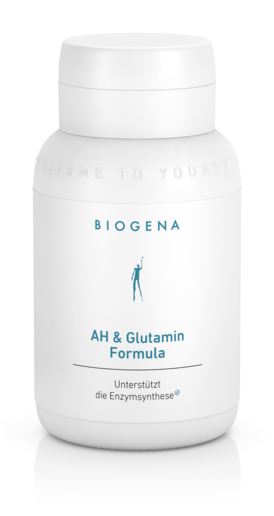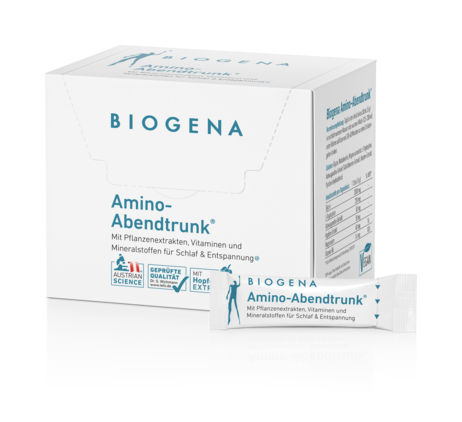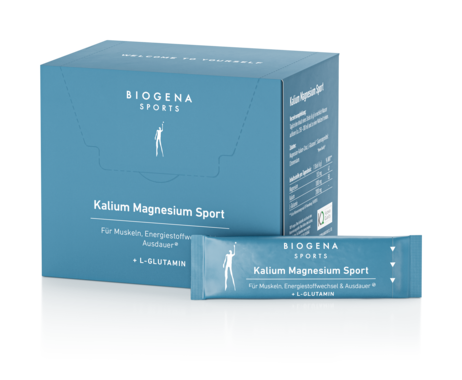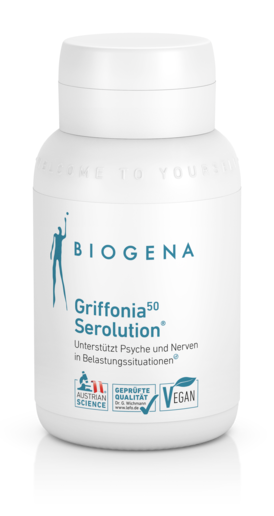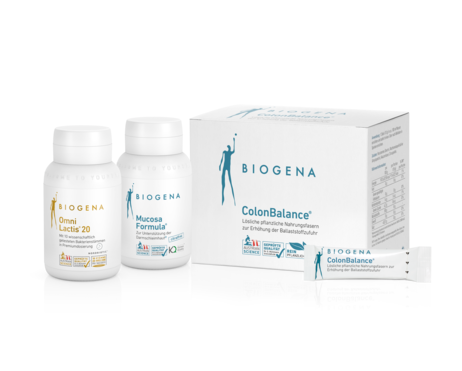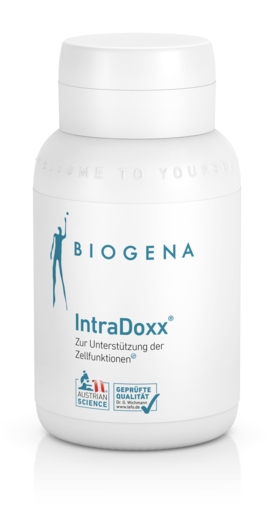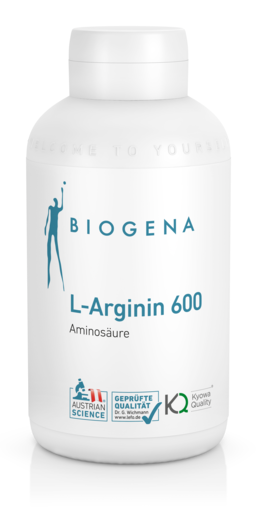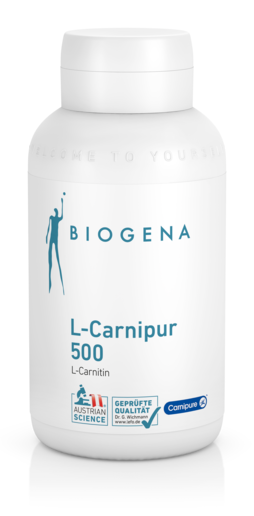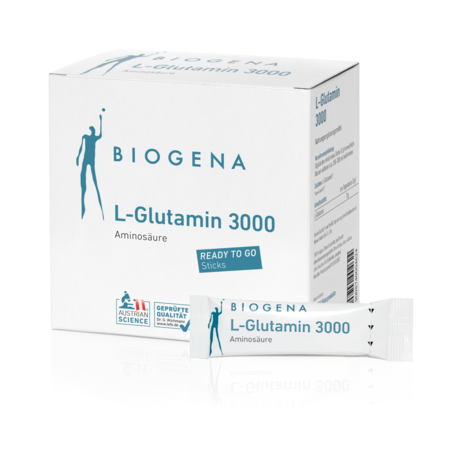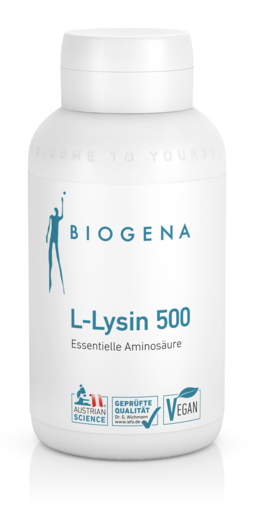Amino acids
Stress, exhausting workouts and special life situations lead to an increased need for amino acids. If the amount produced by the body or absorbed through food is insufficient, dietary supplements are useful.
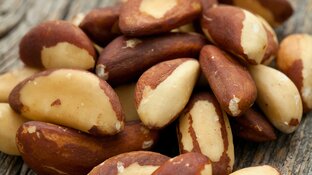

The basic substance for our lives
Water and protein are substances that no living thing can exist without. Amino acids are the smallest building blocks of proteins. Only 20 amino acids are enough for our body to build all of its own protein structures.
They are divided into three groups, and their interaction is what makes our body function.
Classification of amino acids
Essential amino acids
A second group is called essential or indispensable amino acids. They must be ingested with food or, in the case of deficiency, taken in the form of supplements. These nine amino acids are:
- Histidine
- Isoleucine
- Leucine
- Lysine
- Methionine
- Phenylalanine
- Threonine
- Tryptophan
- Valine
Non-essential amino acids
A healthy body is usually able to produce some of the 21 amino acids itself. This group is therefore called non-essential or unnecessary amino acids. These include:
- Alanine
- Asparagine
- Aspartic acid
- Glutamic acid
- Glycine
- Proline
- Serine
- Selenocysteine
Semi-essential amino acids – the special building blocks
Their scientific name could be misleading: Semi-essential or conditionally unnecessary amino acids are anything but unimportant. The amino acids in this group are indispensable, especially in stressful situations, in cases of high physical and mental strain, injuries, and infections. Arginine, cysteine, glutamine, and tyrosine play an important role for newborns and adolescents as well as for patients with metabolic disorders. In addition, these amino acids are required to ensure the balanced production and usability of all amino acids.
Non-proteinogenic amino acids
Around 400 non-proteinogenic amino acids that are important for amino acid metabolism and protein biosynthesis are currently being researched. Some of these serve metabolism (homocysteine), and others serve as neurotransmitters (GABA) or hormones (L-thyroxine).
Sources of essential and semi-essential amino acids
We obtain the protein that must be obtained through diet from plant and animal products. In this case, animal protein is usually better utilized, because it is more similar in its structure to our protein. Protein from plant sources must be combined or occur in a higher amount in our diet to adequately supply the body.
Herbal protein sources
With the exception of nuts and seeds such as pumpkin seeds, hemp, sesame seed and oils produced from them, plant protein contains less fat than animal protein. Plant protein has secondary plant substances that bring health benefits. The main suppliers of protein and thus essential amino acids are:
- Legumes such as chickpeas, soy, lentils
- Nuts and seeds
- Grains (whole grains)
- Types of cabbage
Animal protein sources
Although chicken eggs are the basis for calculating the usability of protein, they are not in any way the top suppliers of animal protein. Hard cheeses such as Emmental and Parmesan, red beef and game meat, fish and seafood are superior to eggs. Other important sources are:
- Top suppliers: Hard cheese, red meat, fish and seafood
- Poultry
- Offal
- Quark (pots)
- Cottage cheese
Protein structure
A protein consists unbelievably of 100 to 22,000 amino acids. The 21 amino acids are linked in a different order depending on the source. This sequence is called the primary structure or the amino acid sequence. The individual structure is genetically determined and results in each protein type having certain properties.
The amino acids are intertwined with each other. Chains of two amino acids (= peptides), three amino acids (= tripeptides), and up to ten amino acids (= oligopeptides) can thus be formed. Compounds of more than ten amino acids are called polypeptides.
Interaction of amino acids
Not only is the structure of an amino acid sequence a complex process, but also the synthesis of amino acids from other amino acids. Cysteine is synthesized from methionine. If phenylketonuria is not able to produce tyrosine from phenylalanine in the body due to metabolic disease, the intake of phenylalanine through food must be limited and tyrosine must be simultaneously administered.
In addition, the amino acid that is least absorbed with food determines how much body protein can be produced at all. This respectively lowest amino acid is called the limiting amino acid. If it is used up in the metabolic processes, no further body protein is built up. If an amino acid is completely missing, the protein formation is eliminated.
This limitation is also a very sensitive process, which makes it clear why the normal balance of the amino acids can fluctuate due to a one-sided diet high stress, illness, or high-performance sports.
Amino acids and their application in the body
The proteins ingested with food are broken down into amino acids in the duodenum and in the small intestine during digestion. They are the end product of the digestive process. Through the villi of the intestine, they enter the bloodstream and then through the portal vein into the liver. Here they are used to build blood proteins and thus find their way into all the body cells.
If the liver is not fully functional as an important organ for amino acid conversion due to illness, incorrect diet, or alcohol abuse, this affects the conversion of the amino acids.
Proteins or amino acids fulfill the following tasks:
- Building the body's protein
- Development of enzymes, hormones, and antibodies
- Renewal of the cell substance
- The base substance of cartilage, connective tissue, and skin
- Support and protection function
- Water binding and water transport
- Transport of nutrients, oxygen, hemoglobin
Lack of carbohydrates and protein
Excess protein is used to generate energy. However, this also means that a loss of energy can occur if protein is absent.
On the other hand, a carbohydrate deficiency can also lead to a disturbance in the amino acid balance. In this case, body protein is broken down, the amino acids obtained from it serve to build up glucose. If the absorption of carbohydrates is correct, the body can form amino acids that are not needed from carbohydrates and fats.
Additional need for amino acids
One-sided nutrition with industrially manufactured products, strict diets for weight loss, low carb with low protein intake (also applies to low-quality protein intake) or intolerances of certain foods are often the reason why the body does not have enough energy available. But sporting performance such as mountain trekking, multi-hour training sessions or high-performance sports also demand protein stores. The same applies to special situations such as stress, illness and convalescence.
In these cases, amino acids can be used as nutritional supplements. As a balanced mixture or as individual preparations, they contribute to the balanced absorption of the essential amino acids and the non-proteinogenic amino acids. They thus make a significant contribution to our body functions and our well-being.




